Chartbook Carbon Notes #3 Four trillion dollars per annum - The shock of reality from sustainable development thinking.
If you ask the question - what would it take to put the world on a track of sustainable development? - the best guesses of the experts who have spent most time trying to figure this out tend to congregate around $4 trillion in investment, per annum over the next decade. This was the conclusion of a panel of experts working for the COP27 meeting in November 2022 headed up by Vera Songwe, Nicholas Stern and Amar Bhattacharya.
Within this $ 4 trillion, if you ask what is needed in additional spending for low-income developing countries and emerging markets not including China, the answers tends to congregate around $1 trillion per annum by 2025. By 2030 closer to $ 2 trillion in additional spending will be needed. For Africa alone, by 2030 the figure is an additional $500 billion per annum.
Another set of estimates have been prepared for the energy transition narrowly conceived, rather than broader sustainable development goals.
One could write an interesting story about the calculation of these numbers and the remarkable resurgence of world-level development thinking they imply. To be talking about a “big push” harkens back to the early days of development economics. Is the message from Vera Songwe, Nicholas Stern and Amar Bhattacharya that we need go “back to the future”?
You might say that as in earlier generations of development thinking there is something disembodied, utopian, anti-political about asking this question - what will it take? - and answering with a round number - $ 4 trillion per annum. After all, there is no “we”, no global government that will answer this call. Nation states pursue geopolitics. As ever, national politicians want to retain power. They have short time-horizons. Capitalism is driven by profit, pure and simple. What kind of political process do we envision that would mobilize and direct this immense amount of money? What kind of revolution would it take?
But the question of “what will it take”, and the answers given by the expert panels are not figments of some liberal progressive dream. The bodies that ask these questions “what will it take?” are real enough. They are authorized by the COP process, which is itself based on UN treaty. The sustainable development goals were ratified by a process no more and no less legitimate than the Paris climate conference. Indeed, the two were ratified within months of each other in the momentous last few months of 2015, when Jean-Claude Juncker was first musing about “polycrisis”.
What is the UN you might ask? Well, the very least we can say is that it is there and it goes on. That is far more than nothing. It is, in fact, a huge collective enterprise. It is our best answer to the question of who the “we” is. Beyond that one can imagine coalitions of the willing, carbon clubs, various corporatist combinations involving a variety of interests. There is no simple answer to the “we” question, but that is what politics is for.
The planetary scale of this “big push”-thinking is noteworthy in its own right. One of the striking things about the Sustainable Development Goals promulgated in 2015 is that they extend to everyone. The $ 4 trillion figure is not for low-income countries only. It includes the US, Europe, Japan and China. Indeed, one might be tempted to say that the twin challenges of China and the climate has made everyone, including even faded “advanced economies” like the US and Europe, into developmentalists.
The experts and their networks form a world that is real enough. This circularly self-recruiting epistemic community is closely connected not only to academia and think tanks but institutions like the World Bank and private business. One could write an interesting study of how such expert groups are constituted and constitute themselves.
I’ve had the privilege of meeting and, indeed working with, several of the folks on this list and they are all smart, profoundly committed, broadminded. But something beyond their distinguished character is driving bodies like the Independent High-Level Expert Group on Climate Finance into existence.
It is reasonable to be skeptical about the nature of such exercises, to regard them as expressions of a certain kind of ideology, a demand on the part of the global elite for recognition as intelligent, thoughtful, long-range leaders and the desire to present themselves as such. But what is also undeniable is that this impulse to rationality exists and its products, ones like the “Big Push” report, are produced in ever greater profusion, inclusivity and sophistication. Skepticism loses its value when it negates the existence of this system of discursive and political problematization in favor of bluntly asserting the primacy of power and profit.
It is clear that we don’t live in a world that is going to scramble to adopt Songwe and Stern’s report and to appropriate $ 4 trillion annually for global sustainable development. But we do live in a world that will produce more and more such reports, which as far as we can tell are not entirely without purchase on reality. And those interventions will produce mediate but real effects on policy and business decisions. So the upshot is that we must navigate our way in a reality that IS structurally hypocritical. On the one hand it sizes up issues it identifies as common questions, makes enquiries, devotes intellectual effort to the problem, makes promises, but then, more often than not, reduces those reports and analyses to the status of internet relics as the result of the more or less complete failure to deliver on account of self-interested resistance and obstacles small and large. And then does it again and again.
So what to do? There are many possible responses. One is to challenge the entire structure, to call out the hypocrisy from the outside. Another, as J.W. Mason recently urged in the context of US industrial policy, is to keep on drilling the hard boards of politics, working the COP process and others like it at every level to squeeze out one win after another. Another is to leverage the knowledge produced from within this structurally hypocritical system to establish accountability and increase the tension, spell out the gap between recognized need, potential and actual delivery.
***
So, let us focus on the figure: $ 4 trillion per annum. The number cannot be repeated too often: At least $ 4 trillion per annum for the foreseeable future. In new investment. Every year. We should learn to live with that number and use it as a benchmark. If IRA, for instance, promises on the most optimistic estimates to deliver $ 4 trillion over ten years in the US, “the richest country in the world”, is that a lot or a little … ?
Rather than shrinking away from the $ 4 trillion in shock the really striking thing about it, is that it is far from utopian. If we take the Songwe, Stern, Bhattacharya figures at face value then the explosive conclusion is that sustainable development for the entire planet is within reach. All the more egregious and inexcusable will be our failure, if we do not. It is one thing to fail grandly in the face of an impossible challenge, it is quite another not to do something of immense important that is, in fact, manageable.
Calculated on the same rough and ready basis, global GDP is $85 trillion and rising. So, as a percentage of global GDP, the $4 trillion per annum starts out just shy of 6 percent and falls to something closer to 4 percent.
Is that a lot or a little? It is no doubt a formidable task. But we have made rearrangements of GDP of this scale, over a multi-decade time horizon before. During the Cold War, spending on defense in many countries was sustained at this level for thirty years. It did not require a revolution. The risks of the metastasizing military-industrial establishment that alarmed Eisenhower in the 1950s became manageable once the West opted for the terrifying, but comparatively cheap option of nuclear deterrence with hydrogen bombs.
What we are havering over is the possibility of setting in motion a sustainable-development-complex on a scale similar to that of the Cold War military establishments of the late 1950s and early 1960s - NOT the Korean war burst that consumed 10 percent of GDP or more. As in the Cold War this needs to happen at the global level and will involve forms of burden-sharing.
Obviously, this would induce a significant reallocation of resources and the displacement of other activities. We may, of course, hope that many of the resources for sustainable development will come out of dirty, polluting and exploitative investments - we have in the past invested in the order of $1 trillion in polluting fossil-fuel per annum. But, should we run up against supply constraints, we know from experience that supply is elastic, again this is a point made forcefully by J.W. Mason. The rate of productivity growth tends to increase with the level of demand and the pace of GDP growth.
In any case, even if there are “costs”, we should not think of this as money “blown out of the window”. Sustainable development investment builds schools, railways, power lines, renewable energy facilities. It is not like spending money on nuclear weapons - expensive, highly-sophisticated deadly artifacts we store in secret silos and hope never to use. In economic calculation it is easy to make too much of opportunity costs. They are, after all, hypothetical. Even if it were to displace other hypothetical usages, the $ 4 trillion per annum on Sustainable Development would not be conspicuously useless. On the contrary one would hope that it would legitimize itself by producing large and positive changes in our world.
If politics dictates, much of the investment, could be made profitable and be commercialized and privatized. It is not essential to stimulate economic activity through the profit motive, but if political economy requires, it can be done. That is certainly what is attracting so much serious money to the energy transition right now, suitably “derisked”, of course. At current carbon pricing levels, according to McKinsey’s most recent report, the vast majority of spending required for Europe’s energy transition has a solid business case.
As Daniela Gabor has led the charge in arguing, the politics of derisking are at the heart of our current political economy. As Daniela Gabor demonstrates in her collaboration with Ndongo Samba Sylla on green hydrogen projects in Namibia, critical engagement with the process, kicking the tires, looking under the bonnet, inspecting the terms of every deal and constantly holding open the possibility of alternatives is a key function for critical intelligence in this current moment.
The strategic role of such visions of public-private partnership is neatly brought out in reports by the COP experts.
Taken at face value, a chart like this, which calls for the mobilization of hundreds of billions of dollars in tax revenue to fund investment and service trillions in new debt, is calling for something akin to a revolutionary process of state-building - a “bourgeois” revolution at warp speed. It is radical and yet it is also familiar. This is the apotheosis of development finance thinking of the last generation. And what has it delivered? In the heyday of the 2000s and 2010s these were the flows of capital into Africa (thanks as ever to Brad Setser).
The problem here is the scale. Measured against the estimates for what is necessary for sustainable development, in the best years, following the development finance formula we were approximately an order of magnitude off, not $500 billion per annum but $50 billion. Currently, funding flows are drying up and more and more African states are facing debt crises.
So we are led to a clash of realities: The reality of what seems financially sustainable given existing commercial and fiscal arrangements. The reality of what has actually happened over the last ten years and has been preached for the last twenty. And the reality of what our best estimates tell us is necessary for the future. And there is one further uncomfortable reality: Measured against the $ 4 trillion per annum benchmark, the only country that over the last decade has come anywhere close to spending, lending and investing on the required scale is CCP-led China. These spending figures from Bloomberg for the energy transition in 2022 bear repeating over and over again.
Not just in 2022 but over the last decade, China’s domestic and One Belt One Road investments are at least in the ball park of what is needed going forward. Europe and the US, both in their domestic and international programs, have fallen short of what is needed judged by the $4 trillion-per-annum-standard.
***
This, to be clear, is anything but a revolutionary vision. The “Big Push” the COP team have in mind is limited and conventional. A vision of sustainability delivered through over $120 trillion in investment over a generation, is no more and no less than a “greener” version of our current trajectory. It does not promise a balance achieved through reductions in demand, or minimizing our footprint on the planet. This is a growth-orientated, resource-intensive vision. It will entail new forms of extraction. It says nothing about exploitation or unequal trade.
Yet this vision should still command our attention because it is the most coherent overall estimation produced from within the global power elite, of what would be necessary to produce some semblance of sustainability within the existing status quo. And, as such, it is a hostage given to fortune. Unlike other, more radical visions this, perhaps, is a callable promise. Its authors certainly recognize its urgency.
We are, Songwe, Stern et al acknowledge at:
“A decisive moment in world history. Humanity is at a crossroads – a moment of great risk and great opportunity. One path leads to attractive growth and development; the other to great difficulties and indeed destruction.” “Our world is in peril: the climate crisis is accelerating. Current action is too weak and too slow; to delay is dangerous. … As shown by each successive report from the Intergovernmental Panel on Climate Change, climate change is occurring at a faster pace than previously anticipated, the impacts and damage are greater than foreseen, and the time for remedial action is rapidly narrowing. Emissions are still rising and tipping points getting closer. What happens in this decade is decisive for the world.”
The least we can say is that we stand open-eyed before this reality.
***
Thank you for reading Chartbook Newsletter. It is rewarding to write. I love sending it out for free to readers around the world. But it takes a lot of work. What sustains the effort are voluntary subscriptions from paying supporters. If you are enjoying the newsletter and would like to join the group of supporters click below. As a token of appreciation you will receive the full Top Links emails several times per week.




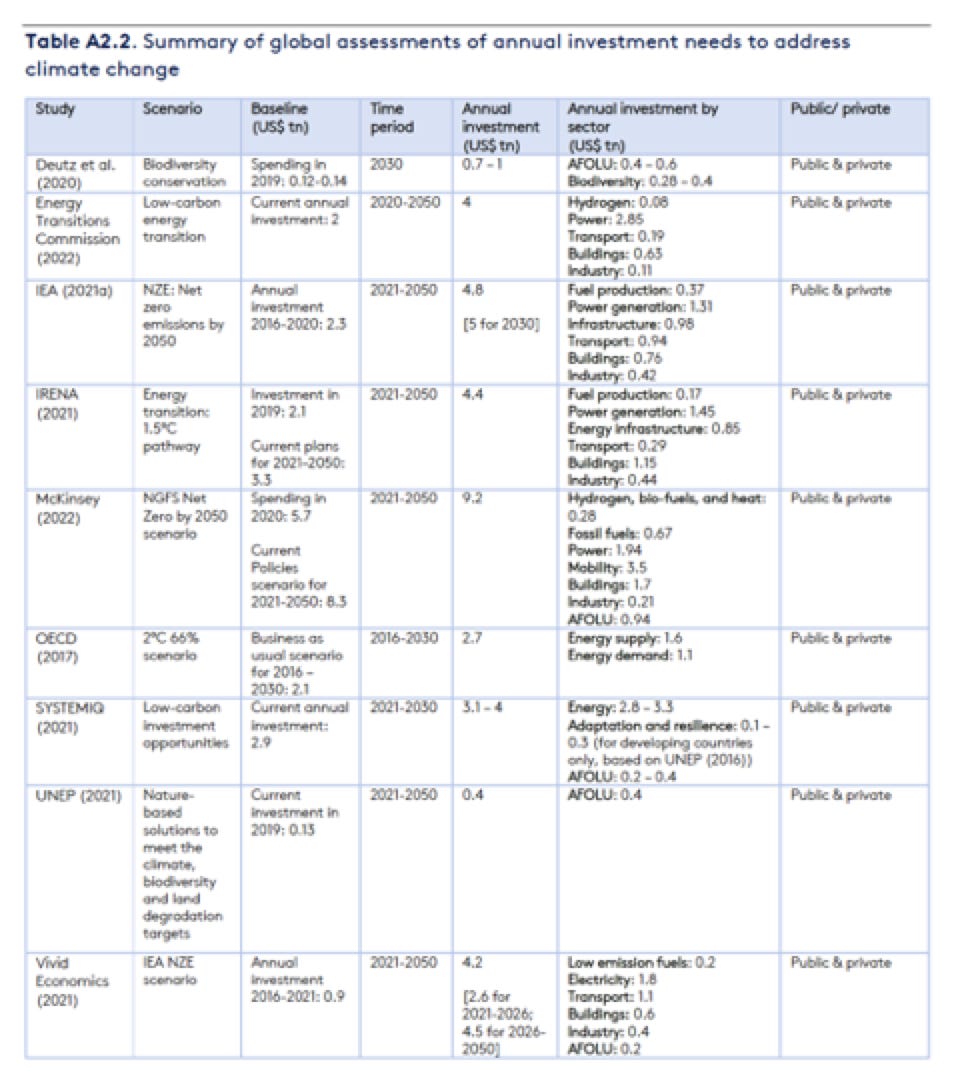
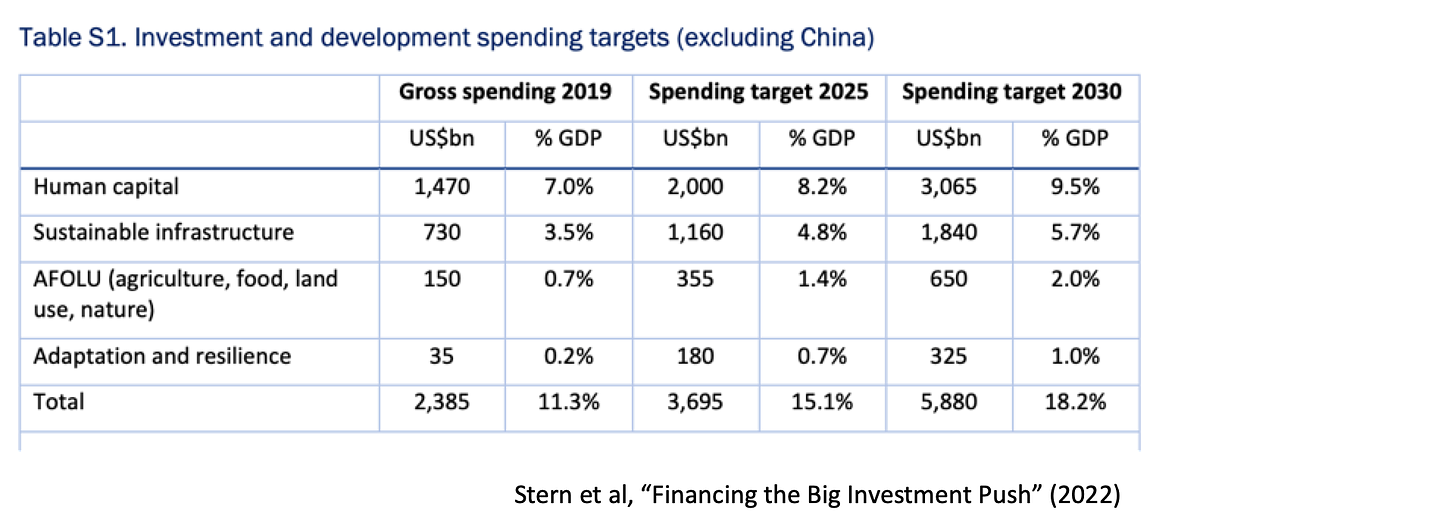
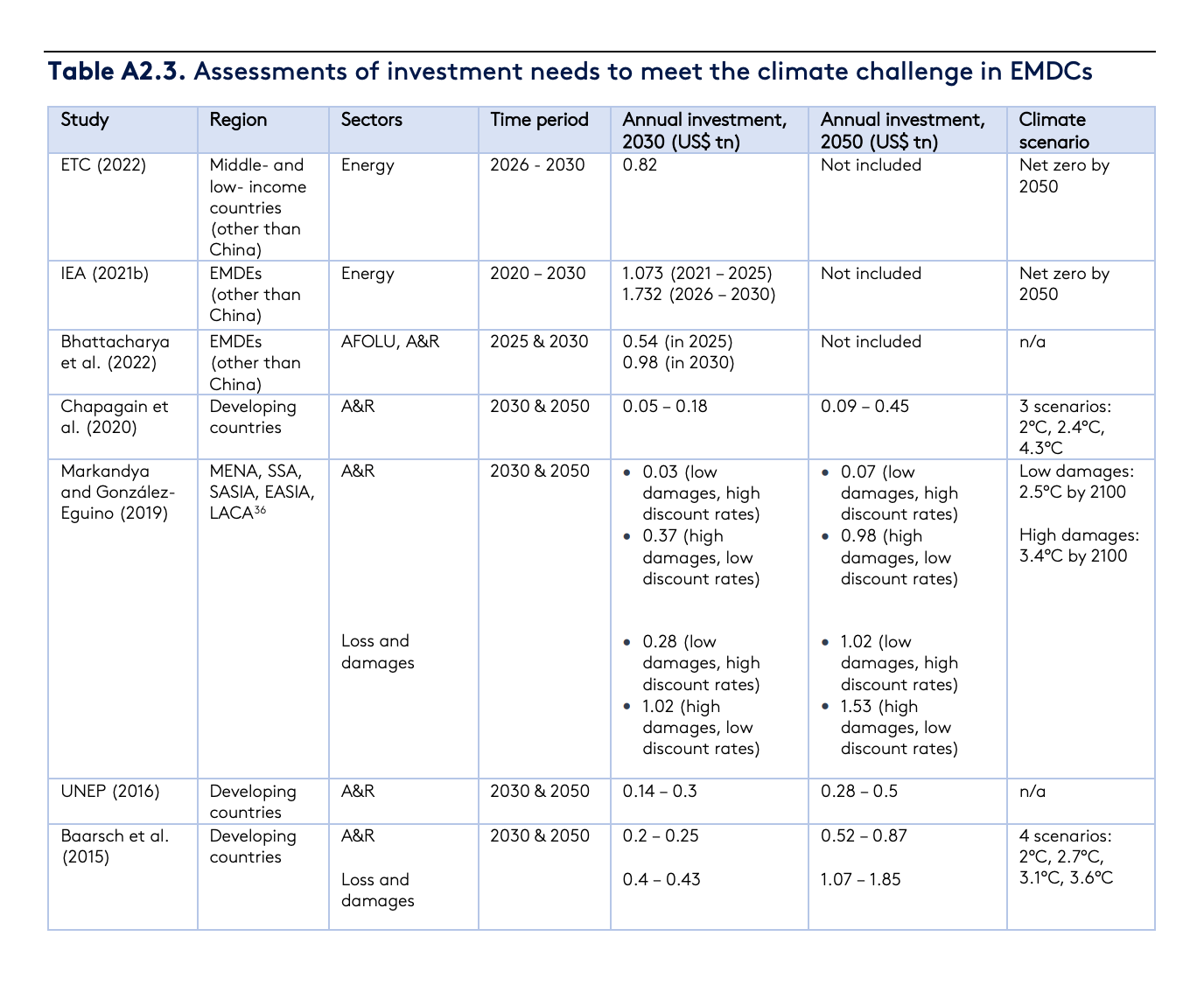
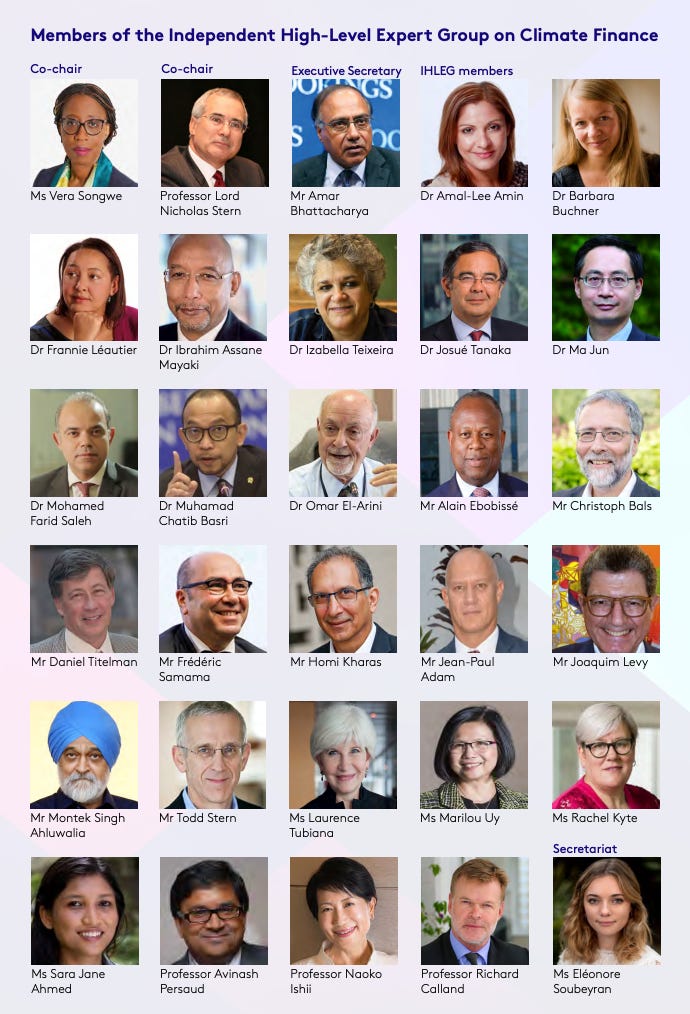

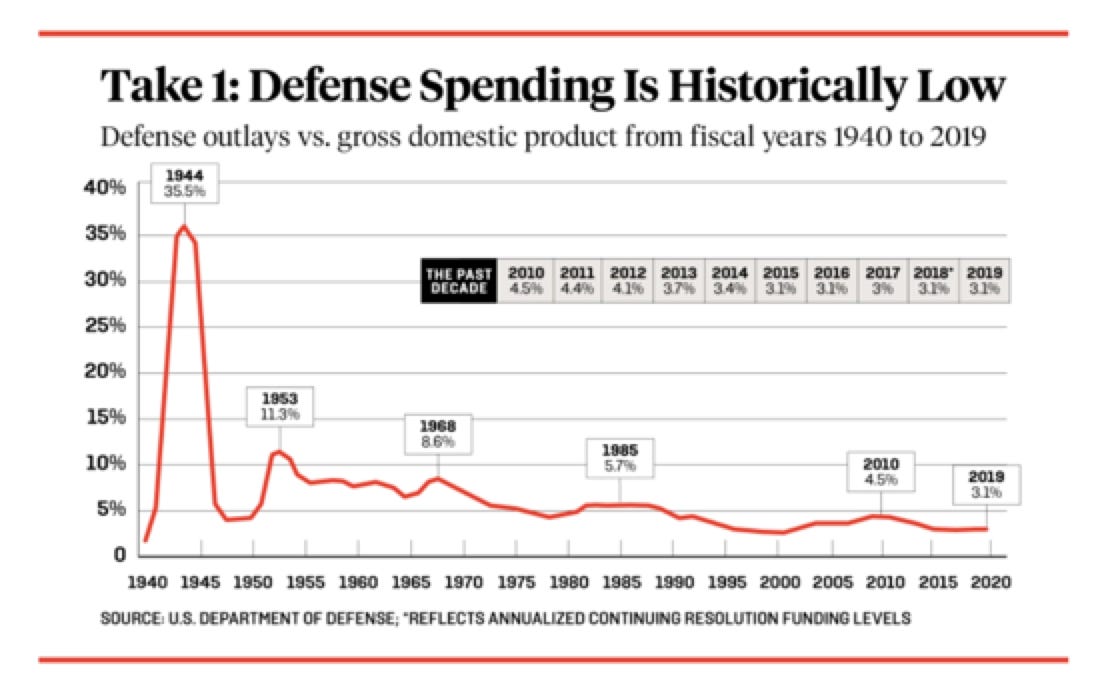
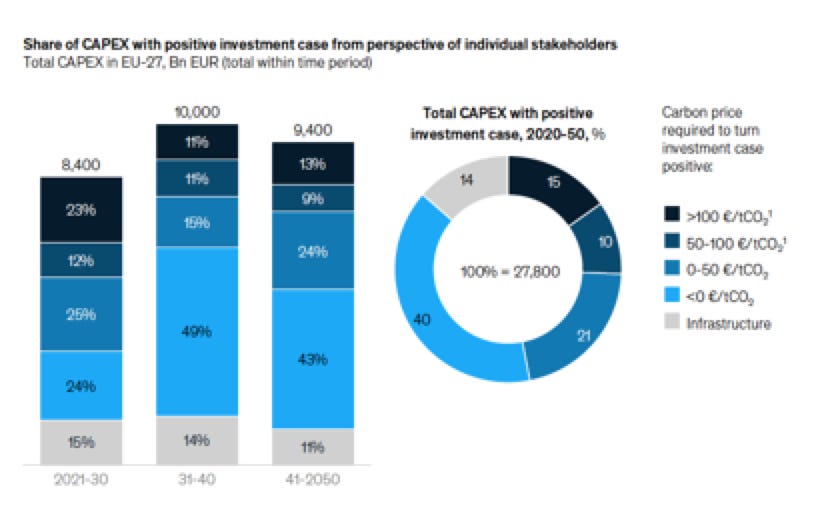
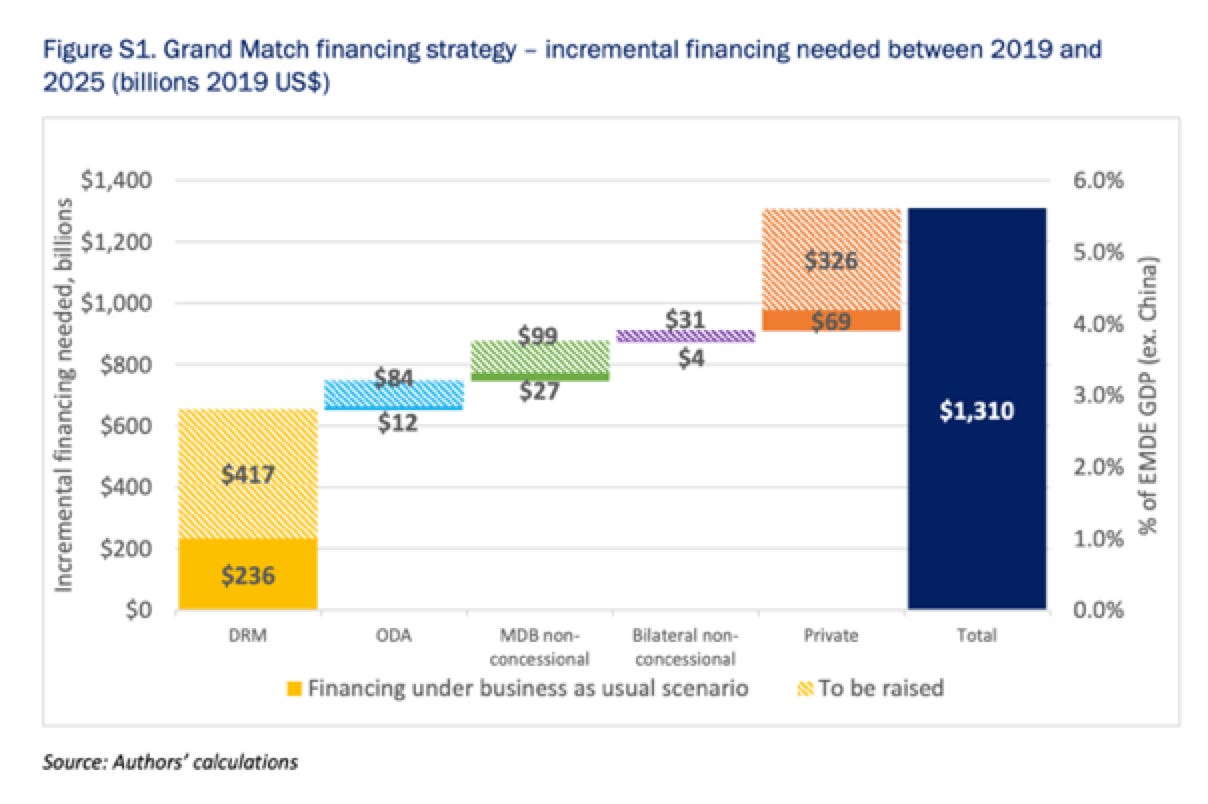
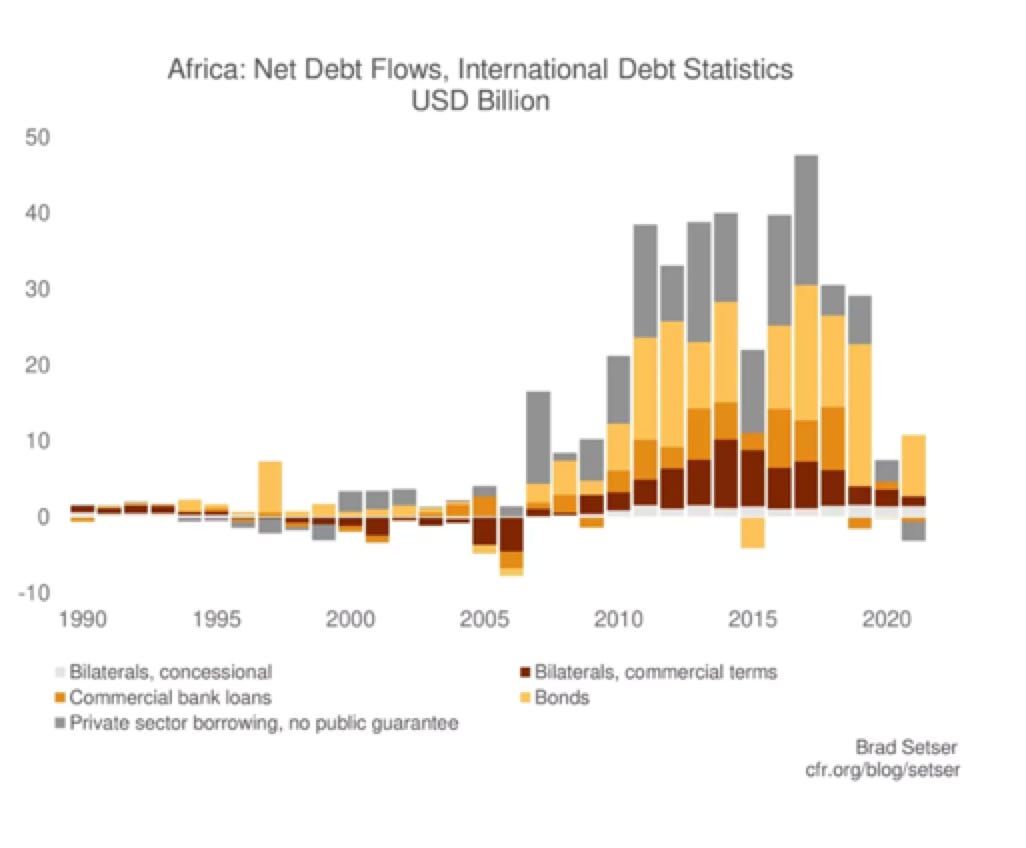
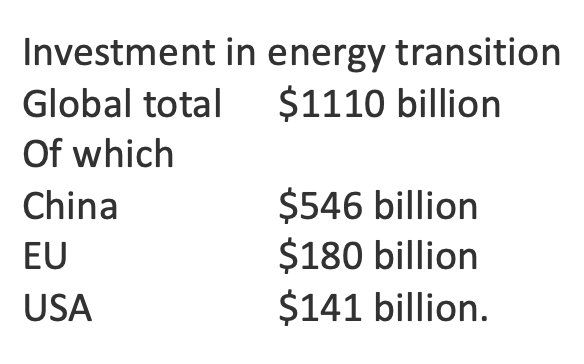
Climate change is one symptom of the real underlying problem of overshoot. Simon Michaux’s work shows that we have insufficient minerals on earth to achieve the energy transition if we remain a 19 terawatt civilisation. Any growth-oriented vision is at variance with the reality of a finite planet. It is our entire economic paradigm that must be changed, not just the flows of capital within it.
Only $4T? What a relief! Your comparison to America's nutjob-level defense spending was very welcome. If just 5% of the world can afford over $1T/year, then the richest 20% of the world just has to emulate that commitment level, and we've got our $4T without bothering the poorest 80%.
More seriously, most people think America is overspending by at least double on defense, with the bill coming in at about $7000/household/year, based on 130M households. That this is cast by defense defenders as "cheap, historically" only shows how *massive* expenses can be dismissed with a shrug by just comparing to the larger economy. (The Atlantic figured "Free College" in 2014, at $40B/year. Even expanding to $50B/year now, that's well under the defense *increase* of $70B in the last Trump budget. Free College would be an obviously minor expense for America, by the defense reasoning. The $70B went through Congress without much debate; Free College therefore deserves even less.)
But other nations have money, too, and if $4T were distributed against the billion homes in the top 40% of the world income distribution, just $4000/year. But the "developing world" isn't all that poor any more, either, and they can probably knock us rich folks down to just $3K/household/year. (I'm not imagining anybody cutting cheques, of course: this shows up in higher bills for utilities, steel, concrete, food(!!), and everything else.)
I repeat: $4T? What a relief!